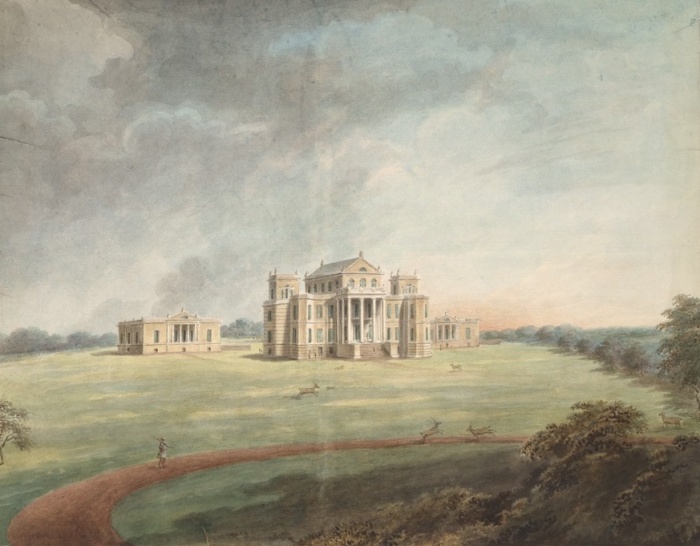Volume: 19, No: 10 ; October-2025
Sita Ram was a very significant yet long-unrecognised artist whose works offer a unique window into early 19th-century India, particularly Lucknow. Sita Ram was a painter who traveled extensively with Francis Rawdon, the Marquis of Hastings and Governor General of India, from 1814 to 1815.
Lord Hastings embarked on a 15-month journey from Calcutta to Jind (now in Haryana) in a flotilla of 220 boats, accompanied by his wife, staff, and a “Bengal draftsman.” This draftsman, later identified as Sita Ram, created 229 large watercolor paintings during the expedition, capturing the buildings and landscapes along the way. These paintings, averaging 40 by 60 cm, were compiled into 10 annotated albums.
Upon returning home, Hastings took these albums with him, and for approximately 150 years (from the 1820s to the 1970s), Sita Ram’s works remained unseen by the public, and his name was largely unknown.
In 1974, Hastings’ family auctioned two of these albums, containing 46 paintings, at Sotheby’s in London. It was at this point, as Sita Ram’s name appeared on the album covers, that the artist and his work gained initial recognition. However, because the paintings were sold anonymously, there was no immediate connection made between Sita Ram and Hastings.
Twenty years later, the family sold the remaining eight albums, along with three additional albums of Sita Ram’s paintings from later journeys in Bengal (1817 and 1821). This entire collection was subsequently acquired by the British Library.

Constantia’s grounds – a lake with a column (The Lat); at the time of constriction. Painting by an artist, Sita Ram
Sita Ram’s paintings are a prime example of “Company Paintings,” distinguished by their use of watercolor on paper, a departure from the prevalent gouache. Unlike the portrait paintings common among European artists like Tilly Kettle and Johan Zoffany, or the “Company School” and “Bazar paintings” of the time, Sita Ram’s works primarily focused on architectural and landscape documentation. This unique focus makes him an invaluable chronicler of the period, especially given that photography only emerged mid-century.
Sita Ram’s contribution to understanding the history of Lucknow is particularly noteworthy. Lord Hastings visited Lucknow in October 1814, and Sita Ram meticulously documented his entrance, including a watercolor of the procession heading towards Teeley Wali Masjid, with the Stone Bridge and Machhi Bhavan visible.
He painted numerous buildings during the Governor General’s stay in Lucknow, including Dilkusha, Constantia, the Lucknow Residency, and Rumi Darwaza, showing how these structures appeared in the 1810s.

Dilkusha by Sita Ram
His detailed architectural paintings demonstrate the evolution of these buildings. For instance, his earliest depiction of Dilkusha shows two-storied corner towers with flat roofs, differing from the later three-storied, conical-roofed versions seen in Felice Beato’s 1858 photograph. His painting of Constantia confirms that construction, specifically of the obelisk, was still ongoing in 1814, and his view of the Residency helps clarify aspects discussed in “Fatal Friendship.”
Even to this date not much is known about Sita Ram, except that he was from Bengal and trained in the late Mughal school of Murshidabad.
The DAG (Delhi Art Gallery) showcased some of Sita Ram’s original works in an exhibition in Delhi in November 2024, further highlighting his artistic and historical significance. Through this exhibition people started knowing Sita Ram and admiring his works, particularly the ones from Lucknow.
LUCKNOWLEDGE is an initiative by Tornos. We do not intend to intrude your privacy and thus have an automated UNSUBSCRIBE system. At any point you may unsubscribe to our e-column or subscribe to it again through a link on our website. The above article is shared and in no way intends to violate any copy right or intellectual rights that always remains with the writer/publisher. This e-column is a platform to share an article/event/update with the netizens and educate them about Destination Lucknow.




